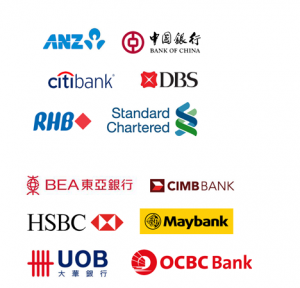In late July, a SORA centered main interest rate benchmark for SGD financial markets was proposed along with the discontinuation of the SIBOR in three to four years
 The Association of Banks in Singapore (“ABS”), the Singapore Foreign Exchange Market Committee (“SFEMC”), and the Steering Committee for SOR Transition to SORA (“SC-STS”) today issued a consultation report (“Report”), titled SIBOR Reform and the Future Landscape of SGD Interest Rate Benchmarks.
The Association of Banks in Singapore (“ABS”), the Singapore Foreign Exchange Market Committee (“SFEMC”), and the Steering Committee for SOR Transition to SORA (“SC-STS”) today issued a consultation report (“Report”), titled SIBOR Reform and the Future Landscape of SGD Interest Rate Benchmarks.
The Report recommends the discontinuation of the SGD Singapore Interbank Offered Rate (“SIBOR”) in three to four years, and a shift to the use of the Singapore Overnight Rate Average (“SORA”) as the main interest rate benchmark for SGD financial markets. This shift will support the deepening of SORA markets, result in more transparent loan market pricing for borrowers, and more efficient risk management for lenders.
Arising from global efforts on interest rate benchmark reform, ABS and SFEMC earlier initiated a reform of SIBOR and an industry transition from SOR to be SORA centered.
Table of Contents
ABS and SFEMC consulted on a new waterfall methodology for SIBOR in December 2017, and transitional testing was conducted from July 2019 to June 2020 to validate this new methodology. Under this new methodology, the underlying market for SIBOR was expanded beyond the term unsecured interbank funding market, to include wholesale funding transactions, such as large-sized corporate deposits.
Concurrently, SORA was identified in August 2019 as the replacement interest rate benchmark to the SGD Swap Offer Rate (“SOR”), which will be discontinued together with the USD LIBOR benchmark after end-2021 . Over the past 6 months, the SC-STS has made good progress in developing SORA markets. This includes establishing key SORA market conventions and infrastructure, enhancing industry and system readiness, and piloting new SORA products that cater to customers’ needs.
UK authorities have highlighted that it would not persuade or oblige panel banks to remain on the LIBOR panel after end-2021. As SOR relies on USD LIBOR in its computation methodology, the likely discontinuation of LIBOR after end-2021 directly impacts the future sustainability of SOR.
The SIBOR transitional testing showed that while the resulting rate – termed the New Polled Benchmark – was relatively robust, it displayed noticeable differences in volatility and levels compared to SIBOR. This posed two issues: (a) the more volatile nature of the New Polled Benchmark would make it more difficult for end-user acceptance, and (b) the different characteristics of the New Polled Benchmark will mean that it cannot directly replace SIBOR in existing financial contracts.
Hence, the Report assessed that, rather than implementing two transitions to separate interest rate benchmarks (i.e. SOR-to-SORA, SIBOR-to-New Polled Benchmark), it will be beneficial in the long run for SGD financial markets to shift to a SORA centered SGD interest rate market (“SORA-centered approach”). This will avoid market fragmentation, facilitate transparency and easier comparison of loan pricing, and promote the development of deep and efficient SGD financial markets.
To ensure a smooth transition for existing SIBOR users, the Report proposes for the transition to be done in a phased approach. Transition of contracts referencing the more widely-used 1M and 3M SIBOR will take place after the industry has substantially completed the transition from SOR to be SORA centered.
Thus, 1M and 3M SIBOR will only be discontinued in three to four years, to provide sufficient time for the transition of existing SIBOR contracts.
The 12M SIBOR will be discontinued by end-2020 as earlier announced by ABS, while the Report proposes to discontinue the 6M SIBOR when or shortly after the 6M SOR is discontinued after end-2021. Currently, 6M SIBOR is relied upon in the methodological fallback of 6M SOR. The discontinuation of 6M and 12M SIBOR is not expected to impact many customers given low market usage of these rates.
Mr Samuel Tsien, ABS and SC-STS Chairman, said, “Major financial centres globally will be moving onto a risk-free rate (“RFR”)-centred approach or increasing the use of their RFRs. The SORA centered approach will better position SGD financial markets for the future.
It will allow users of SGD floating rate products, including retail consumers and SMEs with products that reference SIBOR today, to benefit from a deeper and more efficient market, and greater transparency. The industry, led by the SC-STS, is committed to developing SORAbased solutions and products that will meet the needs of all users, and to working with existing SIBOR customers to achieve a smooth transition.”
Ms Jacqueline Loh, Deputy Managing Director, Monetary Authority of Singapore (“MAS”), and SC-STS member, said, “MAS supports the proposal to shift to a SORA-centered approach, which will involve a paced transition away from SIBOR. This is an important step forward by the industry that will enhance liquidity and improve the overall functioning of SGD interest rate markets. MAS looks forward to working with the industry to ensure a smooth and well-managed transition to this SORA centred approach.”
Mr Paul Ho, chief mortgage officer at iCompareLoan, said: “Forward looking companies will position themselves for the future by being SORA centered early. If they do this they will have a greater understanding of how SORA works and will be at the forefront of innovative SORA-based financing solutions as market adoption increases.”
In practice, a 3-month Compounded SORA Financial Package will reference the 3-month Compounded SORA rate, published by MAS, to compute the monthly loan instalment. The rate will be updated every month instead of every three months as is the case for the 3-month SIBOR-based home loan.
The first applicable 3-month Compounded SORA rate will be the one published by MAS on the date that the bank disburses the loan, and will apply for a period of one month. If the 3-month Compounded SORA is less than zero, zero will be applied.






